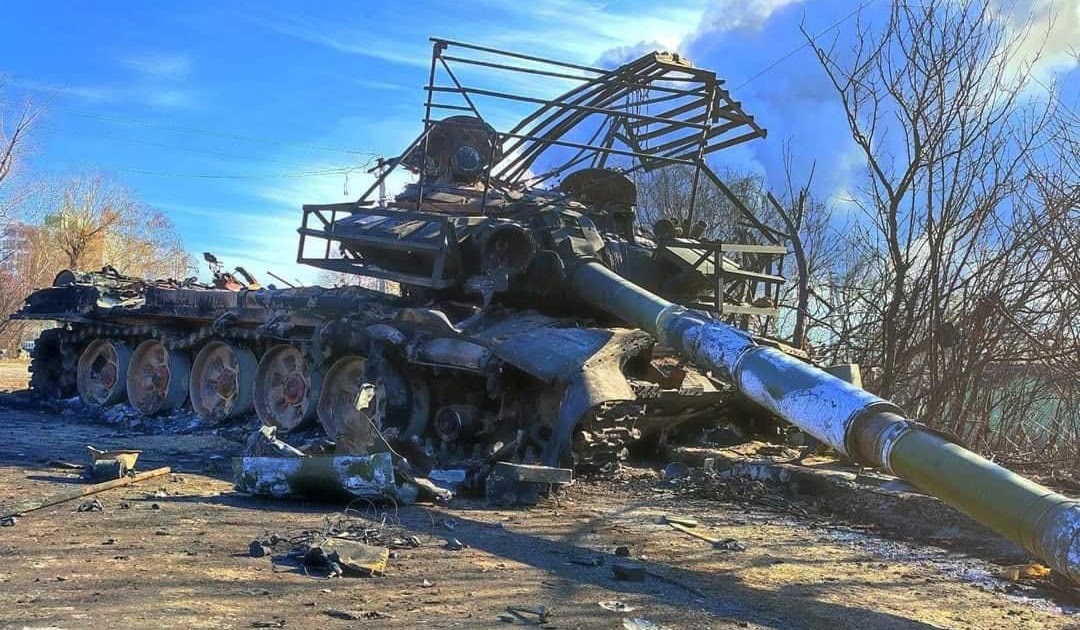Eiköhän niillä ole tilanne jonkinlaisessa kontrollissa. Uutta Bakhmutin kaltaista lihamyllyä siellä tehdään. Jos alkaa näyttää vääjäämättömältä, niin toivottavasti vetävät ajoissa pois. Näinhän toimittiin Bakhmutissakin ja kahta viikkoa myöhemmin osat olivat taas vaihtuneet.Mitä olette mieltä, pitäisikö Ukrainan jo vetäytyä Avdijivkasta vai jatkaa taistelua? Vaarana mottiin jääminen.
Install the app
How to install the app on iOS
Follow along with the video below to see how to install our site as a web app on your home screen.
Note: This feature may not be available in some browsers.
You are using an out of date browser. It may not display this or other websites correctly.
You should upgrade or use an alternative browser.
You should upgrade or use an alternative browser.
Ukrainan konflikti/sota
Eikös ryssät kokeillu WWII aikoina semmosta maahanlaskumetodia, että ku lennetään tarpeeks hiljaa ja matalalla, ei mitään turhia laskuvarjoja tartteta, siitä on jossain olemassa kyllä kuvia ja videon pätkä.... Ne kyl huomas ettei taistelukykysiä paljon per kone jäänny, vaikka ihan parista metristä pellolle koittivat tulla, vauhtia kuiteskin se 140-180Ryssä vielä keksii että tuolla voi pudottaa örkkejä kyliin ja julistaa ne vallatuiksi.

Ilmatorjunta toimii, örkki hihittelee kun scalp/storm shadow lentää s300/400 patterin ohi kohti belbekiä. Video siis lienee siitä taannoisesta iskusta.
USA ei tule KOSKAAN kaatamaan tukipakettia Israelille. Pelkkää teatteria.
Eikä magalla (speaker Johnson) ole mitään tarvetta kaataa Israel pakettia, vaan tarve kaataa Ukraina paketti.
Sen takiahan Johnson yrittää erottaa Israelin paketin kaikesta muista (Ukraina,raja,Taiwan). Näin Israelin paketti saataisiin hyväksyttyä erillisenä. Ja muut jätettäisiin kellumaan mahdollisimman pitkään. Noita muita Johnson ei sitten äänestykseen ottaisikaan.
Tuo Maga-siipi on saanut viivytettyä Ukrainan paketin hyväksymistä jo pitkään. Ja tulevat jatkamaan viivitystä niin pitkään kuin vähänkin pystyvät.
TomiDude
Majuri
MRI-putkessa musiikit korviin ja silmät kiinni - sillähän siellä pärjää.Magneettitutkimuksissa muutaman kerran käyneenä voisin veikata, että tollasessa ahtaassa putkessa kuljetus vaatinee potilaalle vähintään rauhoittavan lääkityksen. Valoisassa MRI:n putkessa pärjää juuri ja juuri ilman että klaustrofobia iskee.
BarrelNut
Kenraali
– Älkää olko typeriä! Tarvitsemme erillisen rajavalvontaa ja siirtolaisuutta koskevan lakiesityksen. Sen ei pitäisi olla millään muodolla tai tavalla kytköksissä ulkomaiseen apuun, sanoi republikaanien presidenttiehdokkuutta tavoitteleva Trump maanantaina Truth Social -viestipalvelussaan.
– Tämä lakiesitys on valtava lahja demokraateille ja kuolontoive republikaaneille. Se panee demokraattien siirtolaisuus- ja rahakysymyksissä tekemän hirveän työn myös republikaanien vastuuksi, Trump jatkoi.
Joka sana totta.
Viimeisen kolmen kuukauden aikana yli 700.000 laitonta muuttajaa on tullut etelärajan yli. Ja sen sijaan että yrittäisi hillitä tätä ihmistulvaa, Bideen hallitus kiihdyttää sitä.
Ja maga-reput tekee kaikkensa Ukrainan tuen lopettamiseksi. Siksi Biden yritti yhdistää rajapaketin ja Ukrainan tuen, mutta tälläkään ei maga suostu tukemaan Ukrainaa.Joka sana totta.
Viimeisen kolmen kuukauden aikana yli 700.000 laitonta muuttajaa on tullut etelärajan yli. Ja sen sijaan että yrittäisi hillitä tätä ihmistulvaa, Bideen hallitus kiihdyttää sitä.
Trumpin porukka on niin ryssämielinen, että on syytä epäillä Venäjän-pakotteiden, Ukrainalle annettavan tiedustelutuen ja Ukrainan käyttämän Starlinkin toiminnan jatkoa mikäli Trump valitaan presidentiksi.
Tuskin sentään JASSM:eja saavat:
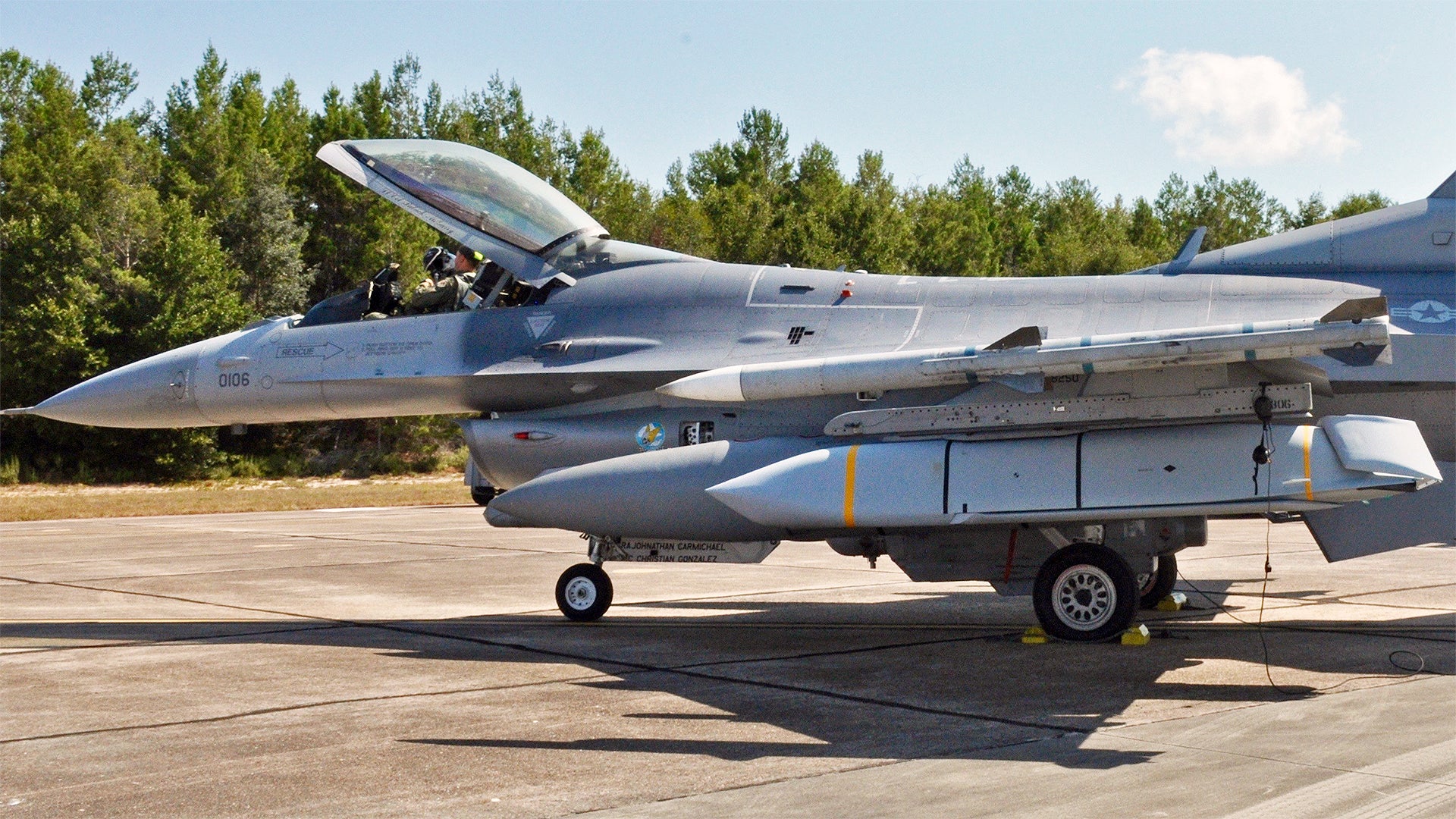
 www.twz.com
www.twz.com

Ukraine Says It’s Getting Long-Range Strike Missiles With Its F-16s
A top Ukrainian defense official says the country is awaiting strike weapons with a range of 300-500 kilometers for its future F-16s.
Ja myöskin ei MAGA rebublikaanit äänestävät jo nyt Trumpin tahdon mukaisesti, koska pelkäävät seurauksia jos hänet valitaan presidentiksi. Eli ei hyvältä vaikuta Ukrainan kannalta.Ja maga-reput tekee kaikkensa Ukrainan tuen lopettamiseksi. Siksi Biden yritti yhdistää rajapaketin ja Ukrainan tuen, mutta tälläkään ei maga suostu tukemaan Ukrainaa.
Trumpin porukka on niin ryssämielinen, että on syytä epäillä Venäjän-pakotteiden, Ukrainalle annettavan tiedustelutuen ja Ukrainan käyttämän Starlinkin toiminnan jatkoa mikäli Trump valitaan presidentiksi.
Jos F-16 käyttöönotto viivästyy tarpeeksi, voi Trump torpata senkin.
Ja maga-reput tekee kaikkensa Ukrainan tuen lopettamiseksi. Siksi Biden yritti yhdistää rajapaketin ja Ukrainan tuen, mutta tälläkään ei maga suostu tukemaan Ukrainaa.
Trumpin porukka on niin ryssämielinen, että on syytä epäillä Venäjän-pakotteiden, Ukrainalle annettavan tiedustelutuen ja Ukrainan käyttämän Starlinkin toiminnan jatkoa mikäli Trump valitaan presidentiksi.
Tavallaan uskomatonta jos jenkkeihin on onnistuttu luomaan noin 50% edustuksella ryssämielinen väestönosa... ja vielä republikaaneissa. Reagan ja Bushit kääntyisivät haudoissa/missä loppusijoituspaikoissa ikinä nyt makaavatkaan.
Viimeksi muokattu:
Rymy-Reetu
Luutnantti
Tämä video?Eikös ryssät kokeillu WWII aikoina semmosta maahanlaskumetodia, että ku lennetään tarpeeks hiljaa ja matalalla, ei mitään turhia laskuvarjoja tartteta, siitä on jossain olemassa kyllä kuvia ja videon pätkä.... Ne kyl huomas ettei taistelukykysiä paljon per kone jäänny, vaikka ihan parista metristä pellolle koittivat tulla, vauhtia kuiteskin se 140-180
Antares
Respected Leader
Mielenkiintoinen twitter-ketju jossa pohditaan, kuinka kauan ryssän panssarivaunujen varastot riittävät (ketju julkaistu 6.2.2024).
Ne jotka eivät jaksa lukea koko tekstiä läpi, tässä hänen laskelmansa lopputulos (toki ehtona se että hänen tekemänsä tulkinnat ja oletukset pitävät paikkansa):
At a constant rate of net loss of 5.75 tanks per day, the tank fleet will be totally depleted by June 2, 2025.
Tässä laskelmassa siis aktiivijoukkojen panssarivaunut + varastotukikohdista aktivoitavissa olevat olisivat loppu 2.6.2025.
Ne jotka eivät jaksa lukea koko tekstiä läpi, tässä hänen laskelmansa lopputulos (toki ehtona se että hänen tekemänsä tulkinnat ja oletukset pitävät paikkansa):
At a constant rate of net loss of 5.75 tanks per day, the tank fleet will be totally depleted by June 2, 2025.
Tässä laskelmassa siis aktiivijoukkojen panssarivaunut + varastotukikohdista aktivoitavissa olevat olisivat loppu 2.6.2025.
I've previously discussed some calculations and adjustments to data on visually confirmed Russian losses in the Russo-Ukrainian war. As a follow-up, I'd like to look at more precise calculations on total losses + remaining stocks.
Let's first look at MBTs.

We work with imperfect data. Thus, a number of adjustments are required.
In general, the greater the required adjustment, the lower the confidence in the estimate. Many of the data points we have require significant adjustments, so the estimates below are low confidence.
That said, the required adjustments for MBTs are likely to be the smallest.
Due to their tactical and propaganda value, as well as due to their general proximity and visibility on the battlefield, MBT losses are probably one of the most complete sets of visually confirmed data.
First, about the methodology.
We assign an adjustment factor by type of equipment in two categories:
- adjustment for proximity/visibility
- adjustment for prestige/value

The adjustment by type for MBTs based on these factors is the lowest (0.95), making MBTs a good candidate for this first exercise.
Most MBTs will be visible on the battlefield, and as their value is high, photos/videos of their destruction will be shared generously.
In my previous thread, I mention the delay in confirmations and the substantial drop in visibility of reported losses after August 2023. I make an adjustment for Oryx data based on that delay. I use the GSUA:Oryx reported ratio up to that time (0.4935). LINKKI
In this calculation, we treat GSUA (General Staff of the Armed Forces of Ukraine) reports as "hits" rather than destructions.
Hit > damaged > destroyed.
Some definitions below.
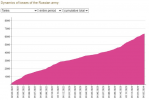
"Damaged" refers to vehicles hit with sufficient enough force, or in a vulnerable enough spot, to likely require at least some repairs.
"Destroyed" refers to vehicles that are either totally destroyed or vehicles that require repairs that go beyond replacement cost.
I've also mentioned the higher rate of visible confirmations by @AndrewPerpetua. The difference is mostly in the form of damaged vehicles as there are methodological differences in terms of what is accepted as a confirmation (Perpetua vs @oryxspioenkop). LINKKI
With the corresponding adjustments, we get 3,237 destroyed and 2,023 damaged MBTs by Jan 1, 2024.
Here we incorporate the adjustment by type factor explained above, and we get 3,407 destroyed and 2,130 damaged MBTs by January 1, 2024. GSUA have reported 5,983 hits by that date.
However, our goal is to understand the true number of economically lost MBTs. Thus, three additional adjustments are needed:
+ (add) 20% damaged, uneconomical to repair
- (subtract) 5% destroyed+damaged uneconomical to repair but useful for parts
- (subtract) 15% captured useful
After all the adjustments, we get 3,551 MBTs economically lost.
The calculations are visible in the attached screenshot.
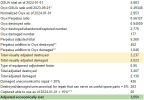
-
At the end of August 2023, Institut Action Resilience (IAR) published the most detailed estimate of MBTs in storage, lost, and remaining I have seen.
You can download the full paper here: https://institutactionresilience.fr/publications.php
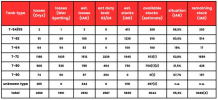
Using satellite imagery of the storage bases of the Russian army, they estimate that Russia had 2,987 MBTs in active duty in late 2021 and 5,639 MBTs in storage, of which 3,044 in a reactivatable/repairable state.
The IAR analysts make a note of an unknown number of MBTs in covered storage. However, they consider the number of such MBTs in good quality rather small, likely fewer than 500 units.
We will assume 500 units.
Based on that estimate of available MBTs pre-war (2,987+5,639+500) and based on my estimate of economically lost MBTs, we get 2,980 MBTs left.
GSUA have been reporting 10.5 hit RU MBTs per day since mid-2023. The estimated rate of economically lost to reported hit has been 60%.
Thus, we can assume 6.3 economically lost MBTs per day. RU is estimated to be able to produce ~200 brand-new tanks per year, or 0.55 per day.
At a constant rate of net loss of 5.75 tanks per day, the tank fleet will be totally depleted by June 2, 2025.
Any of the assumptions above can be adjusted to change the final outcome. This is just one example estimate and projection. It is more a methodological exercise of what should potentially go into a calculation of this sort.
Comments and notes are welcome.
An important note: the main chokepoint might not be MBTs but artillery units, in particular barrel shortage, i.e. the depletion there (barring external help) might come sooner. Very important in that estimation is the research @HighMarsed is doing right now. More on this later.
Sources:
 institutactionresilience.fr
institutactionresilience.fr

 docs.google.com
docs.google.com
 index.minfin.com.ua
index.minfin.com.ua
-
Lisäksi linkitti vanhemman ketjunsa jossa pohditaan tappiodataa: LINKKI
-
Samaa dataa paljon pyörittävä whitherapathy kommentoi ketjua näin: A great method and there's nothing missing from the logical approach. Personally I would weaken the dependency on what the GSUa report as I think that is a source of a slight inflation in numbers but honestly it's all a matter of opinion. Great stuff!
Let's first look at MBTs.

We work with imperfect data. Thus, a number of adjustments are required.
In general, the greater the required adjustment, the lower the confidence in the estimate. Many of the data points we have require significant adjustments, so the estimates below are low confidence.
That said, the required adjustments for MBTs are likely to be the smallest.
Due to their tactical and propaganda value, as well as due to their general proximity and visibility on the battlefield, MBT losses are probably one of the most complete sets of visually confirmed data.
First, about the methodology.
We assign an adjustment factor by type of equipment in two categories:
- adjustment for proximity/visibility
- adjustment for prestige/value

The adjustment by type for MBTs based on these factors is the lowest (0.95), making MBTs a good candidate for this first exercise.
Most MBTs will be visible on the battlefield, and as their value is high, photos/videos of their destruction will be shared generously.
In my previous thread, I mention the delay in confirmations and the substantial drop in visibility of reported losses after August 2023. I make an adjustment for Oryx data based on that delay. I use the GSUA:Oryx reported ratio up to that time (0.4935). LINKKI
In this calculation, we treat GSUA (General Staff of the Armed Forces of Ukraine) reports as "hits" rather than destructions.
Hit > damaged > destroyed.
Some definitions below.

"Damaged" refers to vehicles hit with sufficient enough force, or in a vulnerable enough spot, to likely require at least some repairs.
"Destroyed" refers to vehicles that are either totally destroyed or vehicles that require repairs that go beyond replacement cost.
I've also mentioned the higher rate of visible confirmations by @AndrewPerpetua. The difference is mostly in the form of damaged vehicles as there are methodological differences in terms of what is accepted as a confirmation (Perpetua vs @oryxspioenkop). LINKKI
With the corresponding adjustments, we get 3,237 destroyed and 2,023 damaged MBTs by Jan 1, 2024.
Here we incorporate the adjustment by type factor explained above, and we get 3,407 destroyed and 2,130 damaged MBTs by January 1, 2024. GSUA have reported 5,983 hits by that date.
However, our goal is to understand the true number of economically lost MBTs. Thus, three additional adjustments are needed:
+ (add) 20% damaged, uneconomical to repair
- (subtract) 5% destroyed+damaged uneconomical to repair but useful for parts
- (subtract) 15% captured useful
After all the adjustments, we get 3,551 MBTs economically lost.
The calculations are visible in the attached screenshot.

-
At the end of August 2023, Institut Action Resilience (IAR) published the most detailed estimate of MBTs in storage, lost, and remaining I have seen.
You can download the full paper here: https://institutactionresilience.fr/publications.php

Using satellite imagery of the storage bases of the Russian army, they estimate that Russia had 2,987 MBTs in active duty in late 2021 and 5,639 MBTs in storage, of which 3,044 in a reactivatable/repairable state.
The IAR analysts make a note of an unknown number of MBTs in covered storage. However, they consider the number of such MBTs in good quality rather small, likely fewer than 500 units.
We will assume 500 units.
Based on that estimate of available MBTs pre-war (2,987+5,639+500) and based on my estimate of economically lost MBTs, we get 2,980 MBTs left.
GSUA have been reporting 10.5 hit RU MBTs per day since mid-2023. The estimated rate of economically lost to reported hit has been 60%.
Thus, we can assume 6.3 economically lost MBTs per day. RU is estimated to be able to produce ~200 brand-new tanks per year, or 0.55 per day.
At a constant rate of net loss of 5.75 tanks per day, the tank fleet will be totally depleted by June 2, 2025.
Any of the assumptions above can be adjusted to change the final outcome. This is just one example estimate and projection. It is more a methodological exercise of what should potentially go into a calculation of this sort.
Comments and notes are welcome.
An important note: the main chokepoint might not be MBTs but artillery units, in particular barrel shortage, i.e. the depletion there (barring external help) might come sooner. Very important in that estimation is the research @HighMarsed is doing right now. More on this later.
Sources:
Institut Action Resilience - Publications
Losses, Public Version
Casualties of Russia in Ukraine - official data
Casualties of the armed forces of the Russian Federation during the war in Ukraine.
-
Lisäksi linkitti vanhemman ketjunsa jossa pohditaan tappiodataa: LINKKI
-
Samaa dataa paljon pyörittävä whitherapathy kommentoi ketjua näin: A great method and there's nothing missing from the logical approach. Personally I would weaken the dependency on what the GSUa report as I think that is a source of a slight inflation in numbers but honestly it's all a matter of opinion. Great stuff!
Taitaa vaan olla periaate, että eivät suostu tukemaan demokraattien esityksiä, vaikka olisivat kuinka hyviä heidän ja maankin kannalta.
Perustin uuden ketjun missä voidaan pyöritellä tuota USA:n rajapolitiikkaa.
Harvapartio
Eversti
Kiovan lähelle rakennetaan 500 työntekijän Bayraktar-tehdasta, jonka tehdasrakennus valmistuu vuoden päästä. Siellä tullaan valmistamaan noin 120 dronea vuodessa.
Eiköhän niillä ole tilanne jonkinlaisessa kontrollissa. Uutta Bakhmutin kaltaista lihamyllyä siellä tehdään. Jos alkaa näyttää vääjäämättömältä, niin toivottavasti vetävät ajoissa pois. Näinhän toimittiin Bakhmutissakin ja kahta viikkoa myöhemmin osat olivat taas vaihtuneet.
Lisätään vielä, että sodan aikana kumpikaan osapuoli ei ole kertaakaan onnistunut saartamaan merkittävää (satoja) vihollisryhmää.
Isopia uhkaavia tilanteita on Ukrainan osalta ollut Zolote/Hirske, SD/Lysy, Bakhmut ei ollut varsinaisesti. Avdiivka näyttää selvästi vaikeammalta kuin Bakhmut mutta siellä on isot linnotteet ja kukapa tietää vaikka olisi jotain maanalaisia tunneleita.
Ryssä meinasi jäädä valtavaan pussiin Harkovan vastahyökkäyksen aikoihin Izyumissa mutta onnistui livahtamaan, myös Lymanissa oli lähellä. Nämä livahtamiset maksettiin isoilla aluemenetyksillä. Myös Hersonissa oli uhkaavia tilanteita.
Mariupolia ei voi laskea, koska se saarrettiin käytännössä sodan ensimmäisenä parina päivänä muistaakseni.

